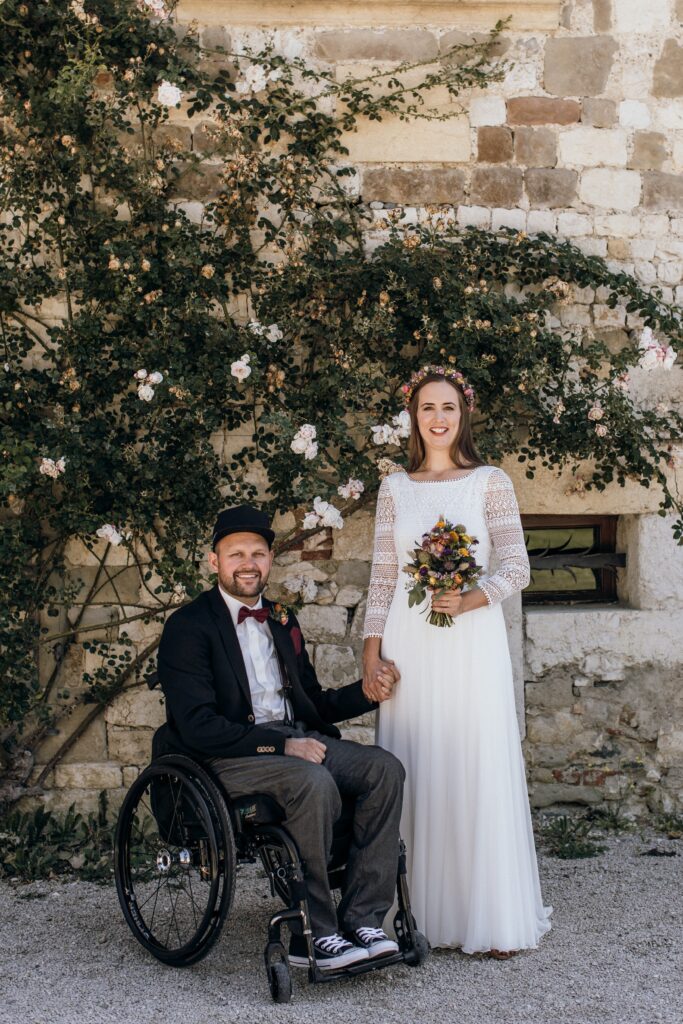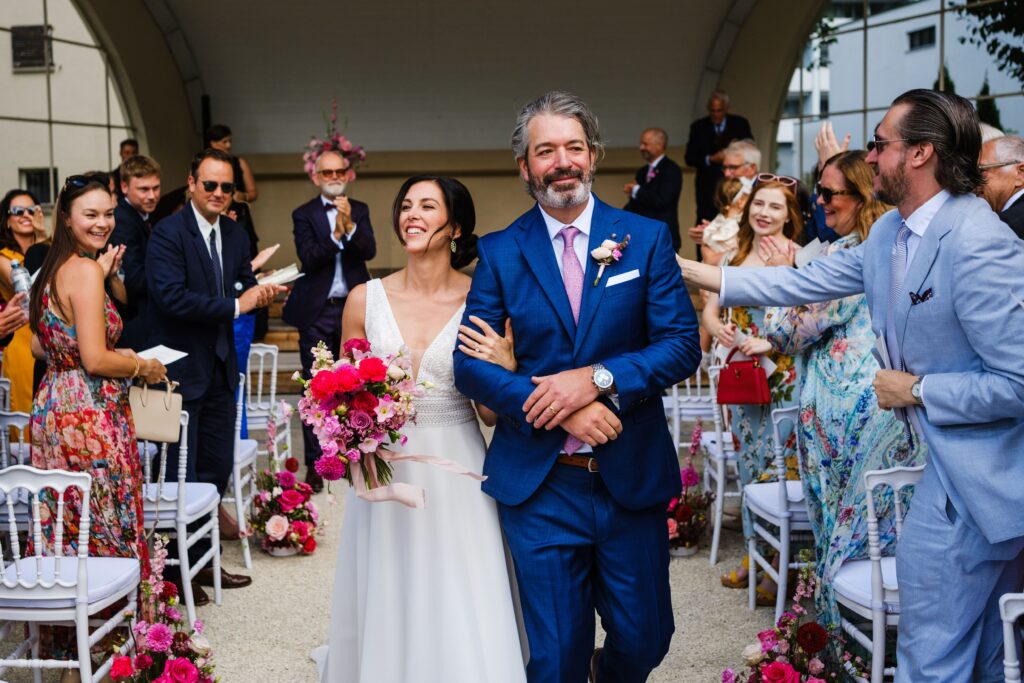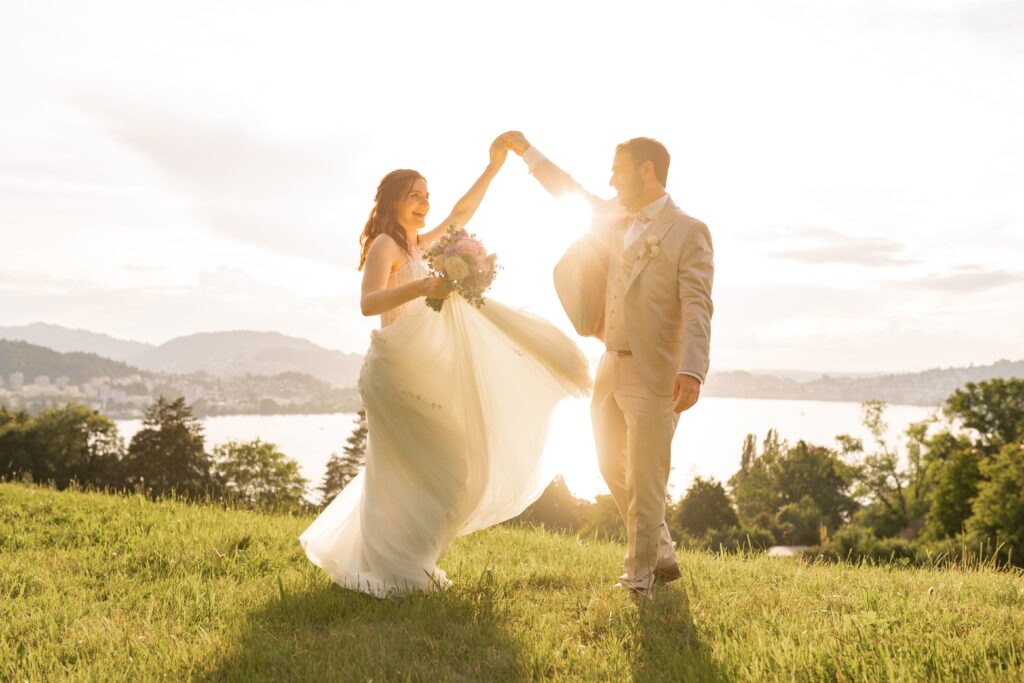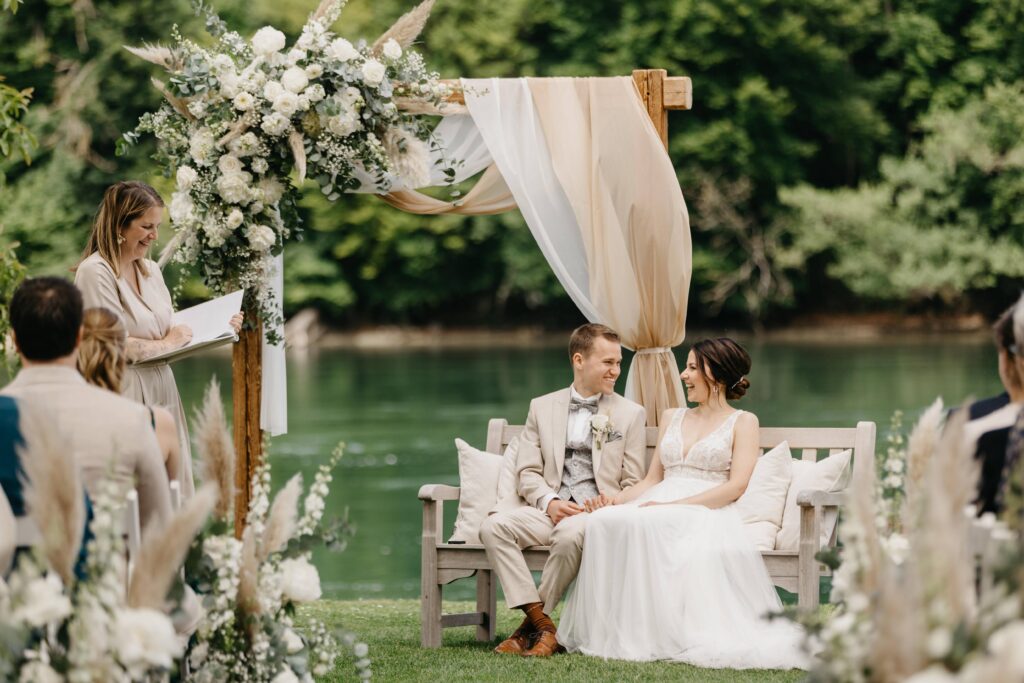Accessibility at weddings is a topic that is usually not addressed first during planning, unless the bride and groom or their closest family and friends are directly affected. Often you start with the search for venues, great designs or you choose the right photographer. Everything slowly takes shape. But what exactly would have to be considered in the planning, if the bride or groom or a guest himself is affected by an impairment and a barrier-free wedding is to be planned?

There are certainly very different approaches in planning, depending on whether the bride and groom or invited guests are affected or not. Basically, however, the planning is done in exactly the same way as if no impaired person is present. Certainly, more attention must be paid to a few things, where you may also bring different service providers on board. Basically, however, it does not make a significant difference, it is only important to be aware of the special situation from the beginning.
If the couple themselves are not affected, the topic is quickly raised with us in the first sessions, whether invited guests are affected, for example, by fear of heights, if the wedding is to take place in the Alps, or according to walking abilities of the guests. For example, also whether special needs of individual guests would have to be considered already in the selection of the venue. Likewise, the age structure of the invited guests is an important point, for example, if long walking distances are planned for the wedding or stairs could be an obstacle.

But do we ever really go deeper into the topic of accessibility? Rarely. With pleasure we would like to point out with this blog a little more exactly what should be considered for a barrier-free wedding.
In this blog, we roughly go into impairments in the following areas:
- Walking impairment with wheelchair
- Visual and hearing impairment
We are aware that there are many more obstacles and limitations than those mentioned in the article. However, it is our concern to make the reader aware of the basic issue.


Guests in wheelchairs
Certainly, the selected venue must clarify whether barrier-free access and free movement in the venue in a wheelchair are possible. In addition, sanitary facilities must be checked and accessible. In case of a wedding ceremony in the church, there is the option that the wheelchair user can be placed on the outside of the pews, but this must be adapted to the situation in the church. If the only option is that the wheelchair can be placed in the aisle, then it will certainly need to be discussed with the photographer and the bride and groom as to how it will be appropriate when the couple moves in and out and if it will be okay for it to be seen in the photos. When it comes to seating, it is important to pay attention to table legs. These can be an obstacle for wheelchair users. Also, the space at the table must be a little more generous. Bistro tables would also be a great solution for a standing aperitif. Sliding doors that open automatically or doors that are not too heavy and can be opened easily and held open for a few seconds would certainly be an advantage. In addition, it is important to note that you need to clarify the journey again and if necessary an additional vehicle. If stairs without elevator or ramp must be overcome or different underground exists, the persons concerned can be informed in advance and clarified with them whether the overcoming is possible without support or whether additional assistance is needed. Of course, it is also clarified whether anything additional needs to be taken into account. The ground often presents an obstacle of varying degrees, whether grass, wood splinters or gravel patches. A direct clarification with the persons concerned is very much appreciated and is a small matter for the realization of a successful celebration.
Bride and groom in wheelchair
In addition to the above-mentioned points, the bride and groom must certainly take into consideration that the dress or suit is comfortable even when seated and the couple is comfortable. Depending on this, the length of the dress must also be adapted to the position.


Visual impairment
Here certainly the complete design of the wedding has a different weight. We recommend to pay attention to special fabrics that make feeling more exciting and comfortable. Also, you can work with flowers that have a stronger scent than others, or the scent can be pleasantly enhanced with aids. In the case of slight impairments, one can generate a kind of color world with contrasts, which can be easier for the eye to see or also trigger more effect. Of course, this is very individual to the person affected. Certainly recommended if the bride and groom themselves are affected. Also, with all the stationery, care can be taken to send it printed and work with embossing, indentations and a little more special paper, so that this can also trigger an experience – if necessary, even invited in Braille. If all guest communication is done online, care must be taken to ensure that the website is also built to be accessible. This should also be the case for the rest of the online communication with guests, so that information is easy and quick to find and understand.
Hearing impairment
This can be very limiting especially for an emotional wedding speech, at best you can work with interpreters who translate directly into sign language on site. If a professional translator is booked in addition, translations can also be made of guest contributions and other speeches. And of course, it is important to make sure that the people involved have a good view of the bride and groom or the guests, and are placed in the seating arrangement in such a way that they can lip-read and/or visually pick up the emotions as well. Otherwise, we recommend printing texts and using the appropriate design. When it comes to the celebration afterwards, DJs can work with different basses, so that the people can also dance along over the vibration and recognize songs if necessary. A preliminary discussion with the DJ on this topic is worthwhile in any case.
In addition to the mentioned points, there are also many small things that should be considered. For example, the set height of the Photobox, so that you can be seen well on the photo, even if you are sitting.
We have listed in our blog post only a few examples of what to consider. Of course, we are aware that there are many more aspects in this regard, which must be considered or there are also other impairments and obstacles, which should be supplemented and above all treated individually. What is important to us is simply to integrate the topic into everyday life and to enable every guest, whether impaired or not, to have a wonderful experience.
We look forward to creating an barrier-free wedding with you and supporting you on site. Sign up now for a free initial consultation.
All pictures were taken by Juli Marleen Photography. Thank you very much for letting us use them for this important topic.





